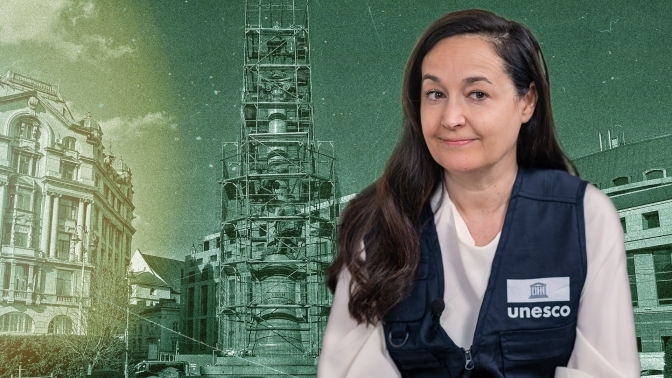
You have been working mainly in countries in Africa, developing various programs and launching UNESCO offices and desks. Now, you have been working in Ukraine for nine months. What can you say so far? What have you learned about Ukraine?
Thank you very much for the invitation and your interest in UNESCO’s actions in Ukraine. As you mentioned, I arrived in Ukraine in October, but UNESCO’s support to the Ukrainian people and institutions began after the outbreak of the Russian full-scale invasion of Ukraine in February 2022. From the beginning, our main areas of operation have focused on the safety of journalists and ensuring continued access to information, particularly in areas facing challenges with electricity and communication.
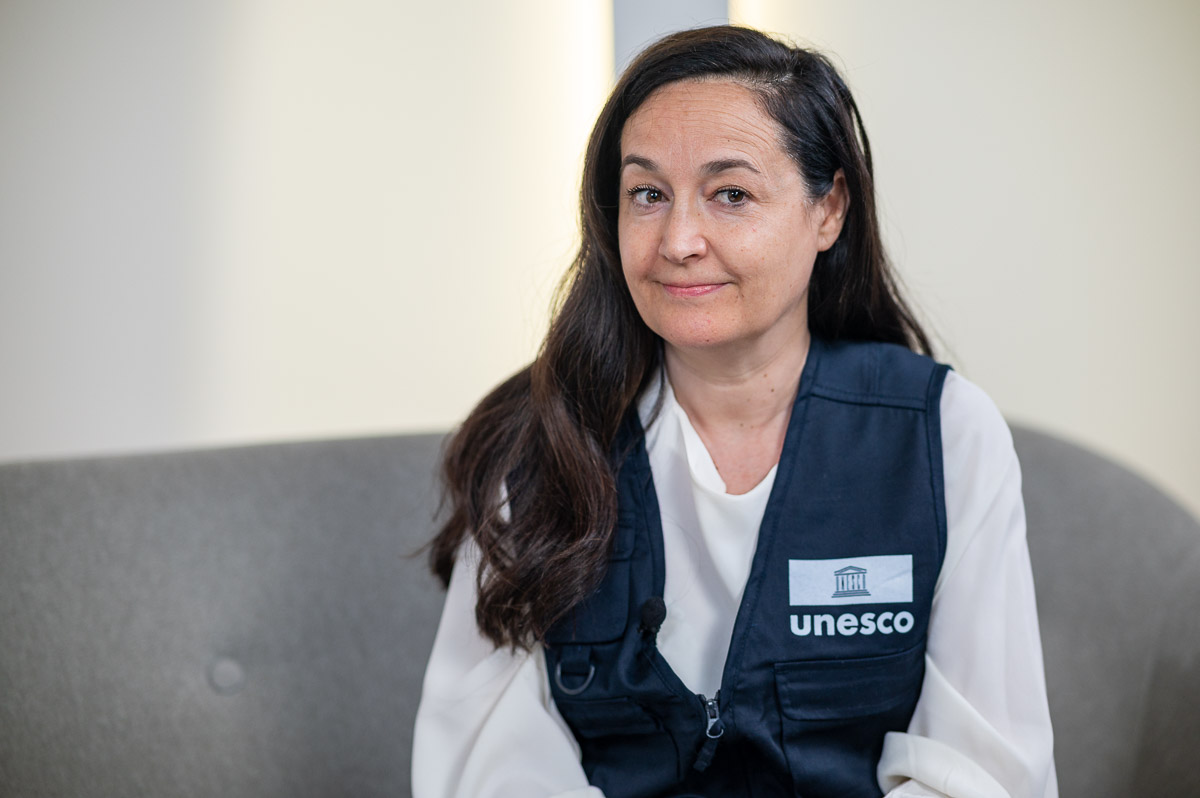
Another crucial aspect has been the continuity of learning, with a focus on distance education. UNESCO has been providing the education system and teachers with the means to connect with students during these difficult times. Additionally, mental health and psychosocial support for children have been a priority, and it remains essential in the medium and long term to help children, communities, teachers, and the entire education system overcome traumas and build resilience.
Lastly, protecting cultural heritage is crucial and involves two main aspects: the physical protection of culture in all its forms and the livelihood of artists and professionals working in this domain. The approach is centered on a human-focused perspective, seeking ways to continue support and maintain social and cultural ties within and among communities. We acknowledge that over a year since the invasion began, there has been a significant outflow of professionals, artists, and creators, resulting in reduced livelihoods for communities and individuals. Therefore, our efforts are aimed at reestablishing a sense of wellness and normalcy and strengthening resilience in these challenging times.
Can you tell me something more in detail? How do you help in terms of improving the livelihood of people in culture and also saving the heritage, especially in such great danger in East and South of Ukraine today?
How do we protect culture? We assist Ukrainians in physically protecting cultural heritage. In fact, since August, we have agreed and signed a letter of intent with the Ministry of Culture and Information Policy regarding key priority areas related to the two aspects I mentioned. To protect sites, information, and documentation, assessing damaged heritage and monitoring it are crucial. UNESCO has been providing assistance in building a platform for regular and daily updates to check for damage to heritage. This is achieved through satellite analysis, image analysis, and accompanied by on-site verification when feasible.
That’s what you did recently in Lviv as well when we had the most recent missile strikes.
Absolutely, it’s been done since May through satellite imagery analysis within 24-48 hours immediately after strikes. This assessment takes into account the magnitude of the damage. The platform and the list of sites are also published on UNESCO’s webpage for Ukraine.
Currently, there are 265 sites with verified damage. However, this number does not necessarily mean that 265 sites have been damaged, as further assessment and verification are ongoing.
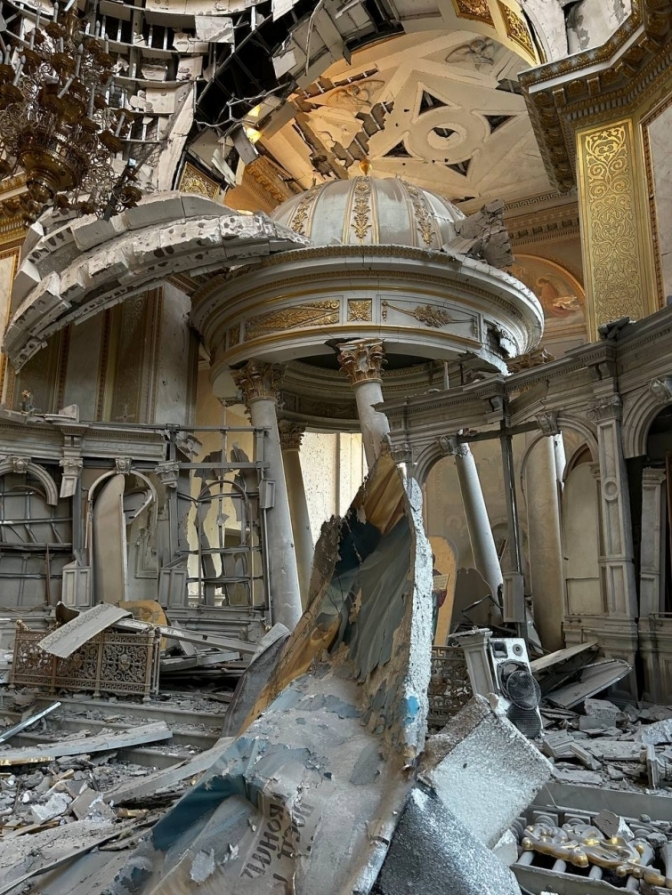
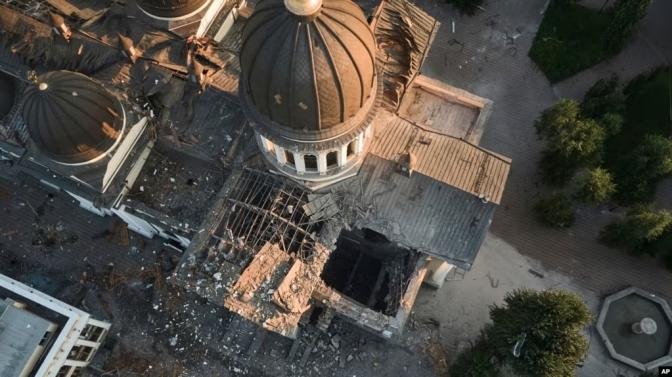
UNESCO has been actively involved in coordinating with the government, the World Bank, and other UN agencies in conducting rapid damage and needs assessment in the cultural sector. The impact of the damage amounts to approximately 2.6 billion in physical damage and more than 15 billion US dollars in losses in revenues over the next 10 years. This highlights the significant financial resources needed, nearly 7 billion, for rebuilding the cultural sector over the next decade, as of the assessment date from February 2023. However, the situation is still ongoing, and the figures may change.
Damage assessment is crucial in understanding the extent of the damage and identifying priority interventions required in an emergency context. It allows for quick repairs and interventions to be prioritized. Protection efforts not only involve accounting for damage but also encompass prevention and mitigation measures. Consistent work is done to prevent and minimize potential damages through various measures and strategies.
Can you tell me more about this? It’s very interesting to understand what we can do in terms of prevention.
I think that many measures can be observed here in Lviv. You have measures that are very symbolic but also important as they have legal and international implications. For example, many buildings, including your building, display the blue shields emblem, signifying them as cultural properties recognized within the framework of the UNESCO 1954 Convention for the Protection of Cultural Heritage in the Event of Armed Conflict.
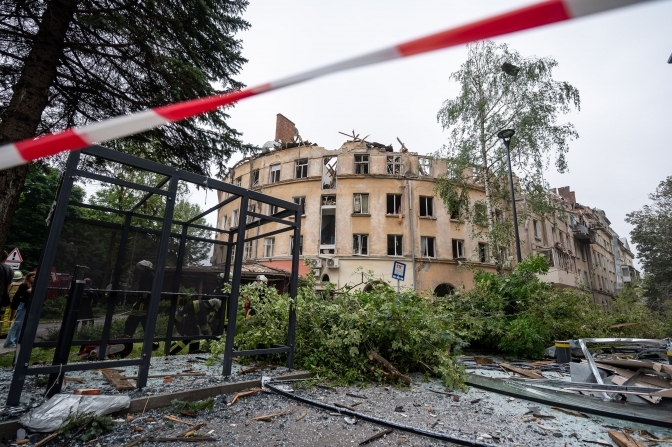
Aside from symbolic measures, there are practical steps to protect open-air monuments in situ, reducing their vulnerability to potential impacts. Measures such as fireproofing and proper documentation, including inventories for museums and collections, are crucial. Proper documentation helps in cases of dismantling collections or illegal exploitation, enabling security forces and law enforcement authorities to identify and prevent illicit activities.
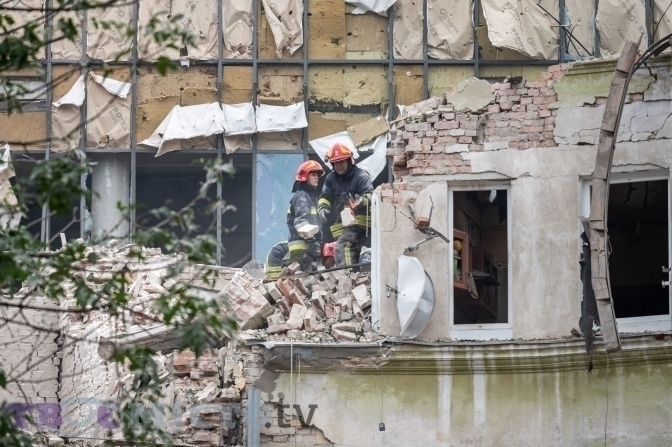
Since March, UNESCO has been alerting neighboring countries about the risk of illicit trafficking and export of heritage, highlighting the importance of taking action. Practical steps have been taken, such as conducting training sessions with regional law enforcement and security border authorities from Ukraine and neighboring countries. The training sessions focus on how to track, identify, check, and stop the possible outflow of cultural heritage, ensuring its protection and preservation.
Last year, we had an interview in the studio with a great architect from France, Martin Duplantier, president of AMO, the French architectural association. He said that Russians are destroying our heritage, our buildings that are a heritage of many centuries because they are trying to destroy our identity. Do you agree with that, and do you think there is a way of making justice work in the future in terms of getting reparations for the damage to cultural heritage?
Certainly, culture is an important part of a country’s identity. It serves as a link with the past and plays a powerful role in building back better and fostering resilience within communities, especially during times of crisis, conflict, or emergencies like the current situation in Ukraine. That’s why protecting cultural heritage is critical now, and intervention is necessary.
It’s important to consider that when we talk about large-scale damage, we are not only referring to individual buildings but also entire historic cities. For instance, cities like Kharkiv and others have suffered significant damage.
As we look towards recovery and reconstruction, it becomes crucial to ensure that people can return to their homes and communities. Simultaneously, we must also protect and integrate historic buildings and cultural assets into future urban planning. These buildings hold not only spiritual, artistic, and cultural value but also possess economic value for the future. Failure to address this in advance risks the loss of much of this cultural heritage.
You mean that the work has to be done already, right now?
Yes, it’s fundamental. And that’s why, when you were asking me earlier about repairs and prevention, we have already initiated many repairs in various locations, such as museums in Odesa, Kyiv, Kharkiv, and Skovoroda museum. These cultural and public assets are not only sources of history but also integral to your identity.
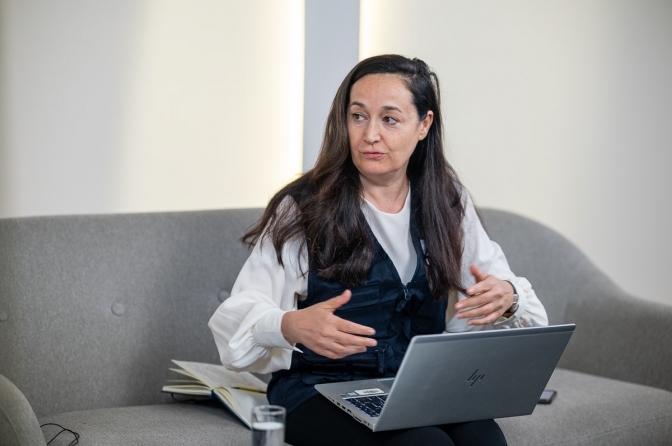
We must also remember that behind these buildings, there are people. Therefore, we are also focusing on supporting artists and creators, ensuring their livelihoods, and enabling them to continue producing and creating even under challenging circumstances. From August to December, we have been supporting community and artistic projects in Kyiv, Lviv, Ivano-Frankivsk, Dnipro, and Kherson, illustrating how culture serves as a source of resilience.
We aim to continue this effort and have already started a second round of projects, recognizing that much more is needed to protect and preserve your cultural heritage and support the people who contribute to it.
Is there any way for artists who need this support to apply for it?
Absolutely, all projects and calls that UNESCO provides for the country are always open for application and can be accessed through our website and official channels. Currently, we have a call that invites cultural associations and NGOs to contribute to the vital role of culture, including art therapy. This call is also linked to the key project that Lviv city is hosting – the establishment of a cultural hub in Lviv. The project began in January and is supported by the Spanish government. The cultural hub aims to provide a platform for artists, not only from Lviv but from all over Ukraine, including those who are currently moving here, and to foster connections with other cities.
And let’s not forget that Lviv is also a UNESCO creative city. This clearly demonstrates the dynamic nature of the city and its commitment to fostering creativity. As part of our efforts, we are establishing a cultural hub in Lviv, a platform that will offer training, capacity building, co-working space, and residency opportunities for artists, not just from Lviv but from across Ukraine. We are currently working on the physical renovation of the premises and hope to launch these programs very soon.
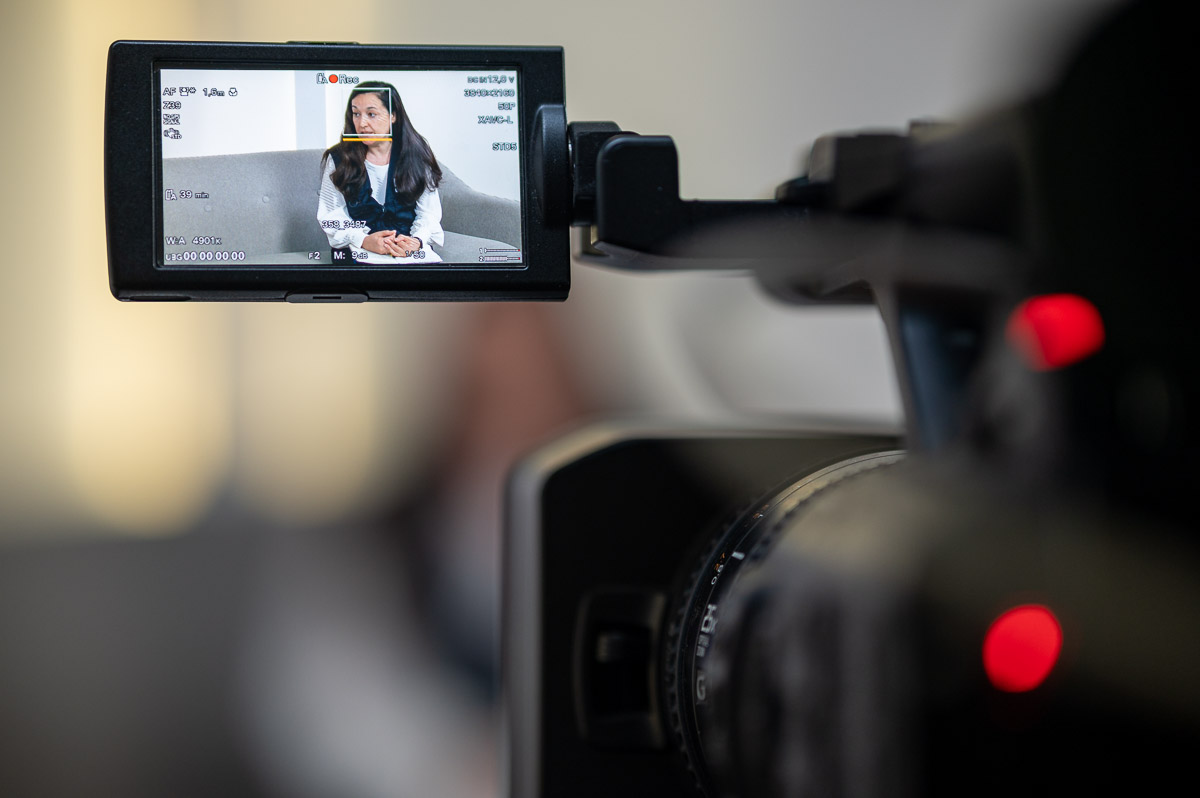
Additionally, we engage in consultations with various associations and the broader community, not just cultural associations and practitioners, but also youth associations and educational institutions. This comprehensive approach is in line with UNESCO’s mandate to address cultural matters from a transversal perspective, considering their interconnectedness and impact on society.
UNESCO’s aim, since its very beginning after World War II, was to facilitate access to education, especially during wartime and post-war recovery. I think this is a significant challenge for Ukraine, as we need to safeguard access to education for our children and make our education even better. What is your point on that, and what is UNESCO doing here in Lviv, in Ukraine?
While working to support education, there is a two-fold approach that is concurrent and complementary. One aspect is the focus on «education in emergency» to ensure that children can continue their education during challenging times. However, it is equally essential to prepare for the long-term. UNESCO’s strategy aligns with the Sustainable Development Goal 4 for education, which aims to provide education for all.
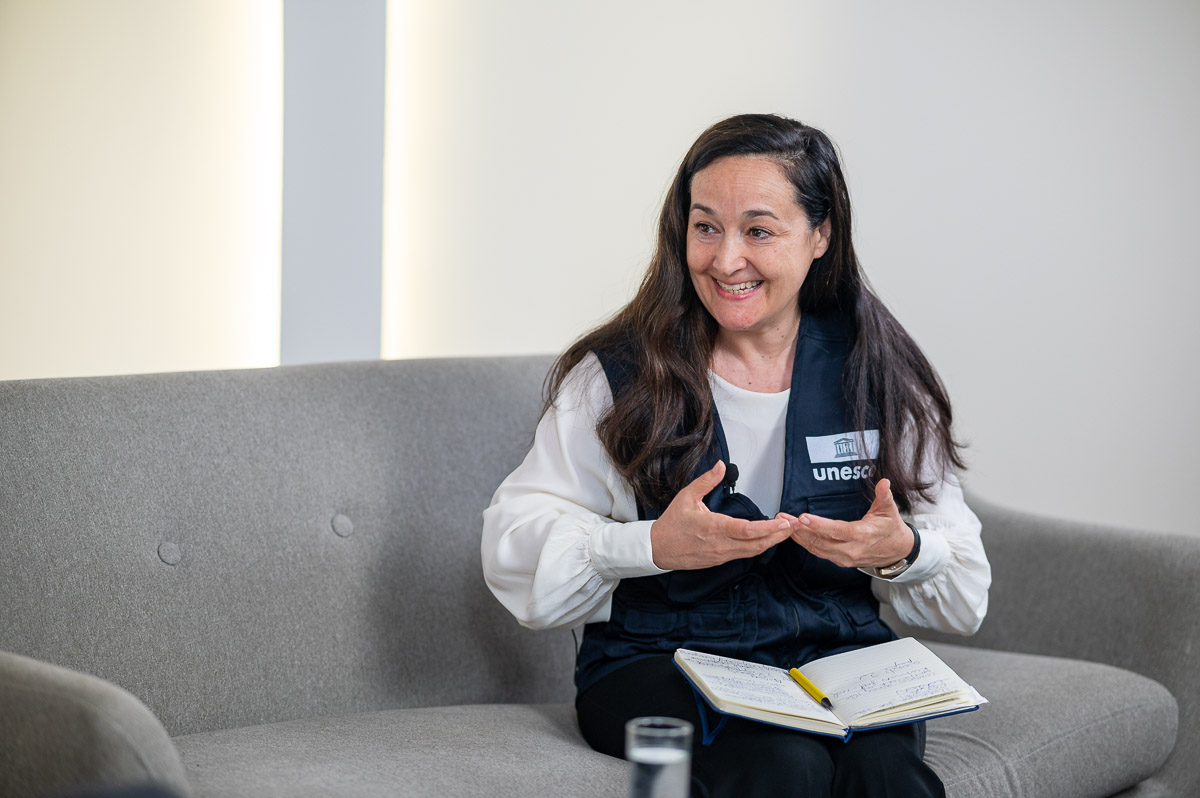
In terms of policy, UNESCO has been working closely with the Ministry of Education and Science to support and implement identified priorities in the education sector. One track is the continuity of learning, where we have distributed over 50,000 devices for online learning to teachers across all regions of Ukraine in collaboration with the ministry. Simultaneously, we are working with teachers and institutions to address pedagogical aspects, including mental health and psychosocial support, social and emotional learning, and other innovative skills that are essential for the long term.
Regarding mental health and psychosocial support, UNESCO has conducted a comprehensive assessment of facilities within the education system in collaboration with various national and international partners. Based on this assessment and with input from all stakeholders, a roadmap has been agreed upon, and we have begun training psychologists in schools. Currently, there is a four-week training program for 100 psychologists, which will be followed by their training of nearly 15,000 psychologists and 20,000 teachers. This comprehensive approach aims not only to provide immediate support but also to enhance the education system in the long run.
Thank you. And I suppose some of those initiatives are also being implemented in Lviv?
The training for psychologists, as I mentioned, and the distribution of devices have been implemented in all regions, especially in areas with prioritized needs. While distance learning cannot fully replace in-person learning, it has evolved into a hybrid format based on the availability of shelters at schools. It also serves as a means to maintain connections with students who are currently outside the country.
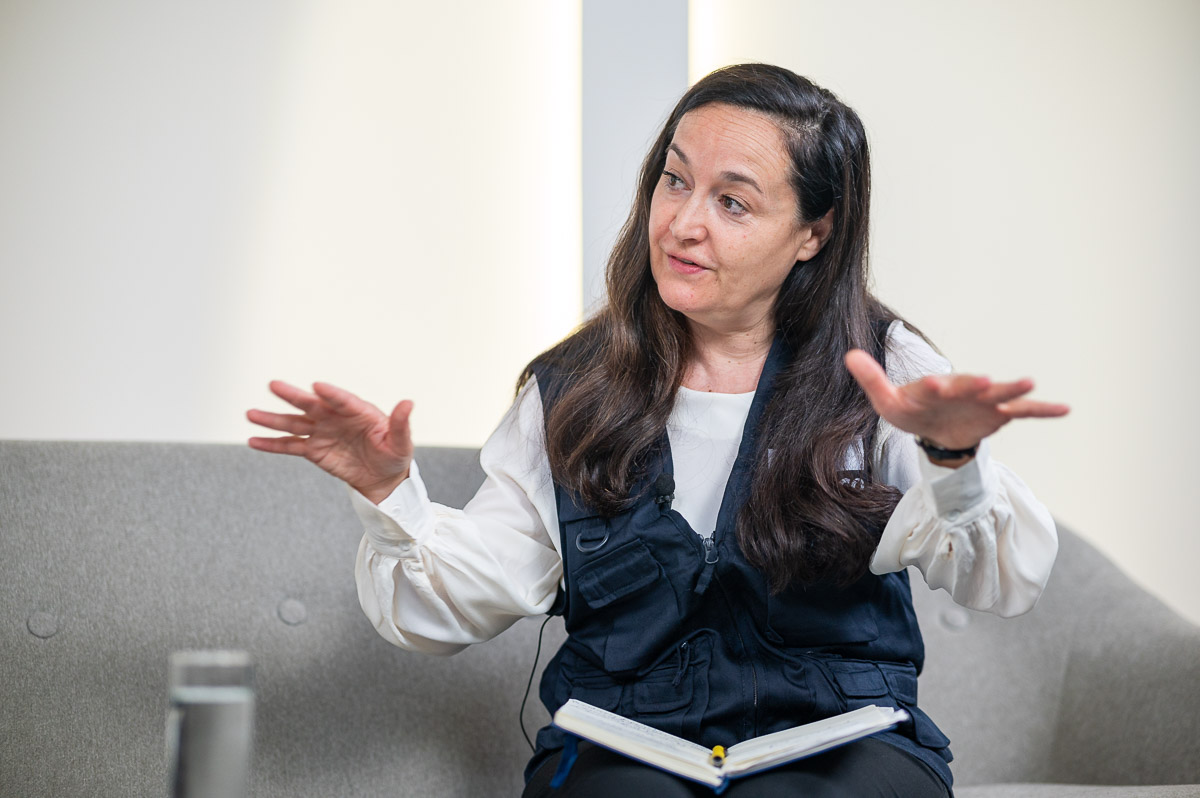
Regarding policies, UNESCO has analyzed policies and infrastructure in European countries to facilitate the recognition and easy reintegration of students into the Ukrainian education system. This analysis aims to create a framework for the long-term benefit of the students. Since last year, together with UNICEF, UNESCO has been assisting the ministry in setting up a digital platform for students to access and pass university entry examinations. This platform remains active and is not just an ad hoc intervention but aims to strengthen the national education system with lasting impact.
And to end this conversation, I would just ask two things. As we are sitting here in Lviv, what is your reflection? I don’t know if you have been here many times already, but can you say what positive sides of the city’s development do you see, and maybe you see something that could be improved as well? Additionally, what do you perceive as the strengths of Ukraine and Ukrainians?
I think your two questions are connected, and I have had the opportunity to be in Lviv several times, and I hope there will be more positive opportunities to be here in the future. I find Lviv to be an incredible city, very vibrant, and not just in terms of its monuments and architecture, but also in the energies of its professionals and the vital forces present here. This is something that I have observed and learned from Ukraine in general.
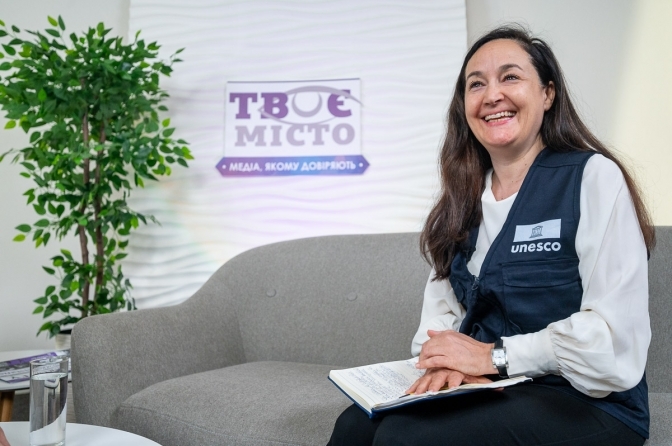
One aspect that particularly impressed me is the resilience of the cultural sector. I have seen empty museums transformed into lively centers where people, families, and communities engage with their past, present, and future. I have spent time with people in shelters, waiting, and it has allowed me to understand the human side of this incredible country and its population. This resilience is a significant aspect, and witnessing it has been meaningful for me in my work here.
Thank you for this wonderful conversation. I appreciate all the work UNESCO is doing in Ukraine, and I hope we will have more opportunities to meet in the future with positive reasons to gather here. See you next time!
Thank you for your interest in UNESCO’s work in Ukraine.
The conversation was conducted by Taras Yatsenko
Follow us on Facebook and Instagram. Lviv Now is an English-language website for Lviv, Ukraine’s «tech-friendly cultural hub.» It is produced by Tvoe Misto («Your City») media hub, which hosts regular problem-solving public forums to benefit the city and its people.












